Read more of this story at Slashdot.
Ronald.phillips
Shared posts
Red Hat's 30th Anniversary: How a Microsoft Competitor Rose from an Apartment-Based Startup
Patrick Swayze's Daredevil Tendencies Got Him In Trouble While Filming Point Break
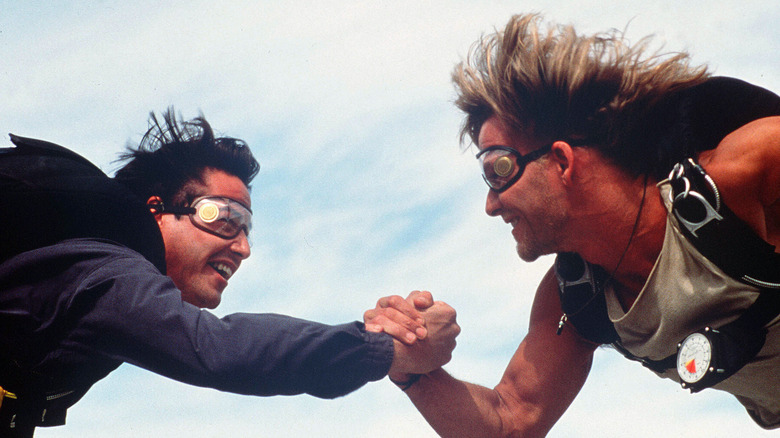
Movie producers usually take out cast insurance on their stars to protect themselves and the production against potential costs, should an accident or some other unfortunate event prevent the actors from filming. Though Tom Cruise has developed a reputation for doing his own death-defying stunts — to the point where he'll even casually stand on a flying plane for a simple promo — he's the exception to the rule. Producers and studios generally don't want stars on the outside of planes, even when their role calls for it, as was the case on "Point Break."
The original "Point Break," starring Patrick Swayze and Keanu Reeves, involves a fair amount of thrill-seeking behavior, such as surfing and, yes, skydiving. Reeves plays Johnny Utah, a quarterback-turned-FBI-agent with a bad knee who infiltrates a group of mask-wearing bank robbers, the Ex-Presidents, led by Swayze's mononymous Bodhi. (That is short for "Bodhisattva," the Buddhist term for an enlightened person who could achieve nirvana but puts it off to help others.)
It seems Swayze took up his character's penchant for jumping out of planes, much to the chagrin of those overseeing the production of "Point Break." In an April 2023 episode of the YouTube series "The Art of Action," hosted by Scott Adkins, Reeves recalled how his co-star started doing the action-movie equivalent of method acting and living out his role offscreen until he received a cease-and-desist letter:
"Patrick, during the course of 'Point Break,' started to skydive, and he started to bring everyone in the tribe — his tribe from the movie — skydiving. So they're all like not working, they're jumping out of airplanes. And eventually, production gave Patrick Swayze a cease-and-desist. Because he kept jumping out of airplanes, and they're like, 'No, we're making a movie, you can't just go jump out of airplanes.'"
'He Did All Those Flips In The Sky'
When Patrick Swayze died of cancer in 2009, Keanu Reeves spoke to Entertainment Weekly about his time with the late actor on "Point Break," estimating that Swayze "had over 30 jumps during the course of filming" and that he listened to the cease-and-desist "until they got to Hawaii." Reeves further explained to Scott Adkins on "The Art of Action" that "Point Break" director Kathryn Bigelow still managed to get some shots of Swayze doing some real sky-diving.
"When filming was completed," Reeves said, "Kathryn Bigelow got Patrick and a cameraman, they went up in a plane, and then, once 'production was over,' then they had Patrick jump out of an airplane, and so he did all those flips in the sky."
These shots were then integrated into the film, where you can clearly see Swayze's face as he somersaults through the air. Since Johnny Utah jumps out of a plane with no parachute, clever editing helped pull off Reeves' own skydiving scene for "Point Break." It should be said, also, that Swayze, like Johnny, was an ex-quarterback, not to mention an accomplished ballet dancer and martial artist who was used to doing his own stunts on film. Only a single motorcycle stunt was too dangerous for him to film two years prior in "Road House," for instance.
The moral of the story, for "Jackass" fans and YouTubers, is maybe: don't try this at home unless you have a death wish and the athletic prowess of Patrick Swayze. As for "Point Break," its influence continues to be felt, not only in the 2015 remake it spawned but in the over-the-top stunts of the "Fast & Furious" film series, which started out as "Point Break" with Toyotas instead of surfboards.
Read this next: The 18 Best Action Movie Actors Ranked
The post Patrick Swayze's Daredevil Tendencies Got Him in Trouble While Filming Point Break appeared first on /Film.
I See You Ending Explained: Small Town Secrets
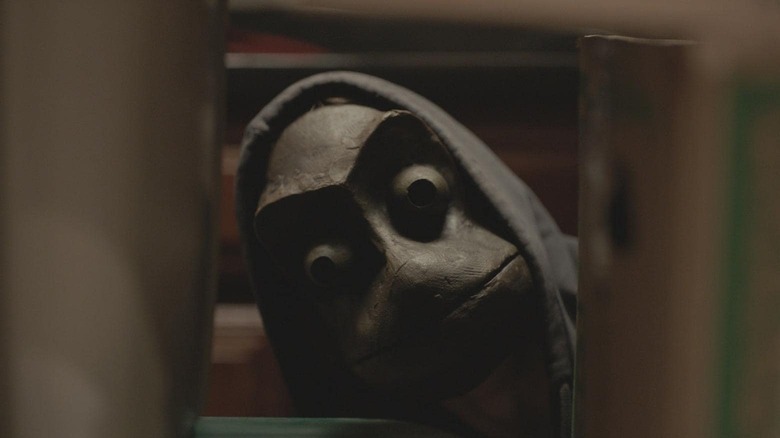
It's a story we see all the time. A quiet and quaint lakeside town. A family from that town maintaining appearances in public but breaking down in private. A series of vicious crimes that even the town's seasoned detectives have a hard time wrapping their heads around. Ultimately, a darkness emerges from the picture-perfect facade and swallows it whole.
So it goes in Adam Randall's 2019 film "I See You." It is something of a mystery movie, a thriller that draws anxiety and suspense from the question of what is lurking beneath the surface of what you're seeing. Even though the small town with hidden crimes setup is familiar, the story goes in wild directions that keep the viewer from ever feeling truly grounded.
What makes the movie different from that setup is the vast array of plot reversals; the way moments take on new meaning when viewed from a different perspective; the haunting cost of an individual's crimes. It may not be hitting the highs of the best unconventional small-town crime tale "Twin Peaks," but it marches to its own beat, handling moments of betrayal and violence with a detached, widescreen visual sensibility. And there are a lot of questions raised throughout.
The dizzying twists come into clarity in the final moments, but the movie takes many gambles getting there, including a meandering opening act and a major perspective shift about halfway through. Who is the "I" of the title? Who is the "you?" When a young boy (Riley Caya) is flung from his bike during a routine ride through the woods, the camera adopts an all-seeing, omniscient perspective, zooming into the boy's route from high above. He disappears.
Missing Children
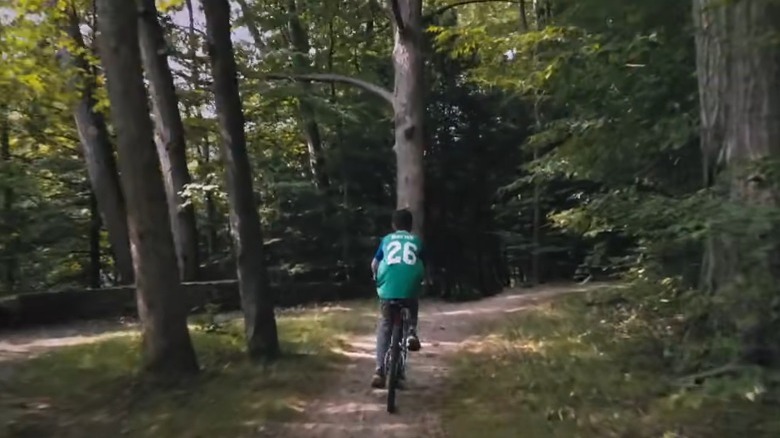
The big trick of the movie is that the boy's fate is not really the driving narrative engine of the movie. Even though Detectives Greg Harper (Jon Tenney) and Spitzky (Gregory Alan Williams) are on the case, the movie is just as concerned with what's going on in Harper's home. If "I See You" isn't one of the best detective movies, that's because its focus is just as much on familial strife than the case at hand. Director Adam Randall's misdirection here is potent.
Harper's family life has been complicated, possibly torn beyond repair from his wife Jackie (Helen Hunt) having had an affair. Now, Jackie suffers the insults of her teen son Connor (Judah Lewis) and Greg sleeps on the couch, returning to work every morning to solve the case of the kid's abduction, making progress when we do see him work. A green pocket knife found on the ground by the child's last location suggests an old case: a convicted pedophile and child abductor named Cole Gordon, locked up 15 years ago.
We're given just enough clues regarding the nature of the crime to stay curious and invested, but the movie stays around the Harper homestead, giving us extensive shots laying out the geography and the pristine interior design. If some of the repetitiveness around the house seems to drag on, it's necessary too. The undercurrent of the family being watched, emphasized by a long string of voyeuristic wide shots that slowly zoom in, doesn't seem to be developed. At one point, Greg steps out on the roof to see what looks like his son's joints in a mug. The slowly creeping shots suggest that he's about to get thrown off and the threat in the house feels supernatural.
Perfect, All-American Family
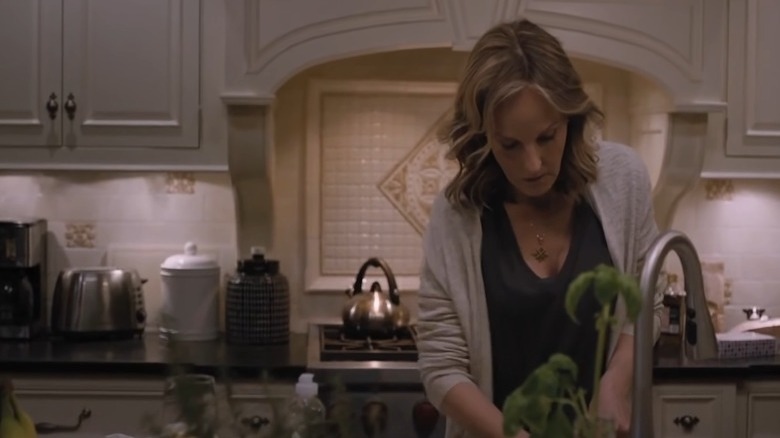
Like a lot of movies dealing with the horrors underneath the polite veneer of small-town life, "I See You" uses the dissolution of the family unit at the movie's center as a mirror. The threat inside the house wouldn't be as effective if the family hadn't already destroyed themselves, but there they are, in a beautiful home, totally unwilling to trust each other or even communicate beyond the surface level.
Greg gets locked in a closet mysteriously. When a repairman tells Jackie her "daughter" let him in, she doesn't even question it. Bringing it up with Connor just starts another fight about her affair.
Her lover Todd (Sam Trammell) returns to the house too. One of director Adam Randall's great plays here is refusing to underline the nature of Todd and Jackie's relationship, or making explicit what she saw in him or what led to the distance between her and Greg. In giving the viewer just a brief glimpse of Todd -- the polar opposite of Jackie's moody, obsessive husband -- we know enough. As the two talk outside, Todd gets hit by the same mug Greg spotted on the roof earlier, meaning it was probably Connor's doing. She leaves Todd in the basement to drop Connor off at school.
By the time she's able to check back in on Todd in the evening, he's been killed and she assumes it was Connor's doing. Together, she and Greg discard the body with the ease of any of the great criminal cinematic couples. And Connor, still oblivious, is on his computer, reeling when he gets a message: "Do you know what phrogging is?" Behind him, a masked figure approaches.
His parents return from their body-burying to find him tied up in the bathtub, with a green pocket knife.
Phroggers
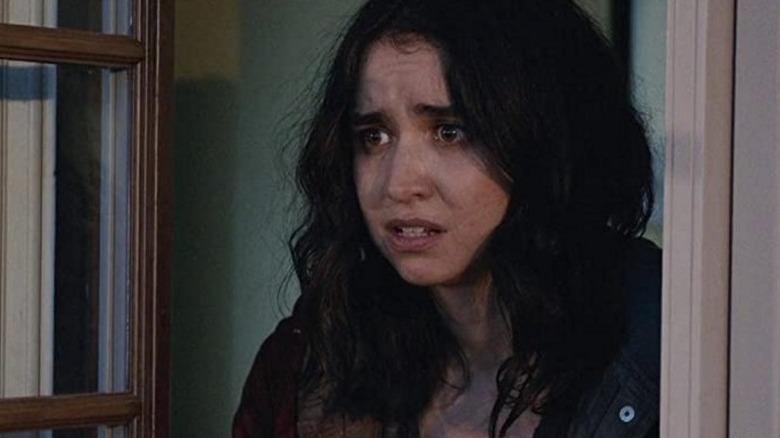
"Phrogging," as the movie helpfully explains, refers to the act of secretly living in a house, without the residents' being aware. It's a bit like squatting, but with an actual presumed victim -- the people in the house.
Rather than the supernatural threat teased throughout the movie's first half, we learn that the people responsible for the home invasion are a man and a woman maybe a few years older than Connor. Their names are Mindy and Alec (Libe Barer and Owen Teague), as they explain to the camera via their video diary. For them it's like tourism, a chance to vicariously experience the lives of these people. And in the case of the Harper household, they've been given especially chaotic lives to observe, and to destroy. Mindy notes that Alec picked this house out and it's his first time phrogging. They're both anxious, but excited, setting up shop in the family's attic.
It's a big twist, one worthy of Rian Johnson's "Glass Onion." Effectively, it puts the unsettling and meandering quality of the movie's first half through a new perspective, as everything falls into place. We relive the first half of the movie with these new characters, and see how every creepy bit of psychological pain unleashed on the family has come from them. The "daughter" the repairman saw? Mindy. The joints in the rooftop mug? Alec's. Greg mysteriously getting locked in a closet? Also Alec.
As time goes on, their actions become darker. Alec becomes drawn to a different aspect of the crime -- the ability to "mess with" people -- and his psychopathic designs quickly overtake the initial experiment.
Who Killed Jackie's Lover?
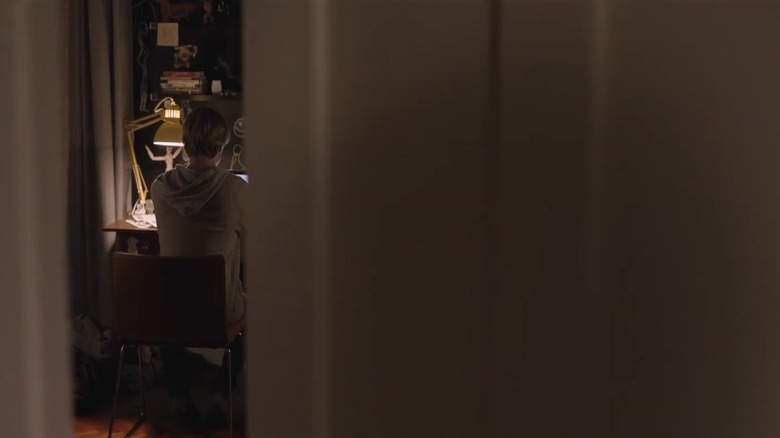
Because of all this, any perceptive audience member begins to suspect Mindy and Alec were responsible for Todd's death. The thrill of the phrogging has given way to both of them being paranoid and nervous, knowing they can't get away with it much longer. But Alec hangs on, as if he's on a mission to ruin these peoples' lives.
In fact, the two have nothing to do with Todd's death. Mindy ends up seeing the man in the family's basement. She then sees Greg violently kill him before planning with Jackie to dispose of the body, in one of the most disturbing moments of the movie. When she goes upstairs to warn Alec, we realize he was the man in the mask, now tying up Connor in the bathtub and a few moments away from shoving Mindy down the stairs. He puts her unconscious body in Greg's car and plots his next move. When Jackie finds her son tied up, she takes him to the hospital, and Greg drives off to parts unknown.
In Greg's car, Mindy wakes up to discover many green pocket knives, realizing she's in the car of the child abductor, who we now realize is Greg. The movie has made a point of setting up clues as to Greg's secret identity: the troubled marriage, the late nights, the sleeping on the couch, and more explicitly the killing of Todd. He brings Mindy back to the house to kill her after she stumbles on the hidden location of the missing boys. She's already called the cops, but we know Greg is capable of handling a body.
After killing her, he is attacked by Alec and knocks him out.
Alec's Revenge
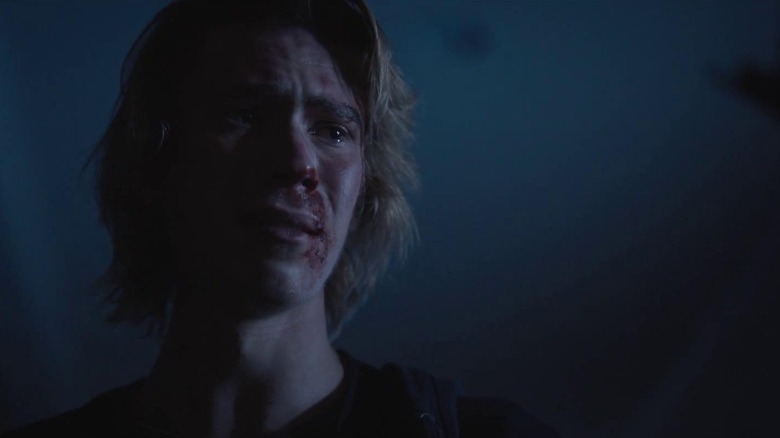
While many of the movie's questions are resolved by the time you get to the climax, one major mystery remains. Why was Alec so focused on ruining this particular family? Many houses could have been picked by the phroggers, so what led to them picking this one? Again, the movie's hidden the explanation in plain sight, making it so obvious it doesn't register until you get to the final moments. So many twists have been deployed at that point that the clearest answer is foggy.
The last time the town saw child abductions with the green pocket knives was some 15 years ago. Spitzky, Greg's partner, has always taken credit for putting away Cole Gordon, the man presumed responsible. Naturally, the case's resurgence led to the cops looking into the victims, and where they are now. One is clearly mentally unwell, hardly able to communicate with the police. The other is a mystery.
At his home, Greg is eventually shot by Alec in the garage, just before the arrival of the police. Spitzky emerges from his vehicle to shoot Alec in the shoulder and then he takes another look, clearly recognizing the young man. It's been 15 years since they've seen each other.
As the movie edges into its haunting conclusion, flashbacks show Alec as a boy, crosscut with his being wheeled into an ambulance truck as an adult. We realize we're seeing the abduction and the perpetrator is not Cole Gordon but someone we recognize -- Greg. The twists throughout the movie shift our perspective and understanding of the characters. At first, Alec and Mindy's phrogging turns them into villains destroying a family's life. But in the movie's final moments, it becomes clear that for Alec it was an act worthy of the best revenge movies.
Read this next: Horror Movies That Make Us Root For The Villain
The post I See You Ending Explained: Small Town Secrets appeared first on /Film.
RBDOOM-3-BFG 1.5.0 Patch

This update is huge and replaces OpenGL with DX12 and Vulkan using Nvidia's NVRHI API and adds support for glTF 2 models and animations. So over 600 commits later and probably over 1200 hours provided by 4 programmers RBDOOM-3-BFG 1.5.0 is final after one year of development. You can just extract the files over the 1.3.0 release.
Surround Your House With These Foundation Plants

Whether you’re into classic, well-manicured American suburban landscape design, or favor a more natural look featuring native shrubs, you probably have some type of foundation plant around the perimeter of your house (or at least the parts visible from the street).
The DOJ Detected the SolarWinds Hack 6 Months Earlier Than First Disclosed
Read more of this story at Slashdot.
After Years Of Development Hell, Blood Meridian Is Finally Happening With John Hillcoat Directing

Cormac McCarthy's "Blood Meridian" is a modern American epic, a mythic tale that unflinchingly captures the brutal and violent spirit of the West, devoid of any of the heroism and starry-eyed optimism that's usually part of the genre. Shockingly, however, despite the novel's immense influence and grand cinematic scope, "Blood Meridian" has never been adapted for the big screen. Finally, after numerous attempts from a long line of filmmakers eager to bring McCarthy's seminal work to life, John Hillcoat will be directing a proper adaptation, according to Deadline.
There's an argument to be made that "Blood Meridian" is quite possibly the most savage, cynical, and terrifyingly bleak Western ever written. There are no beacons of justice in McCarthy's Wild West; instead, there's only the scalp-hunting Glanton gang and the carnage that his crew perpetuates. A deconstruction of Western tropes that serve to highlight the racist, imperialist, and sadistic attitude of the United States' expansion out West into Mexican and Native territories, "Blood Meridian" has inspired many a revisionist Western since its original publication in 1985. Unfortunately, a string of failed plans to adapt the prestigious work has made it seem as if the novel is cursed with the "unfilmable" label, though that will soon come to an end with Hillcoat's project.
The Long Road To Hell
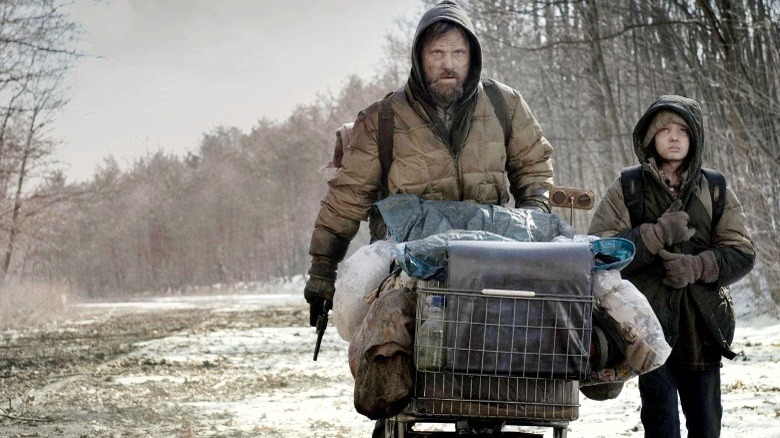
Hillcoat has already directed a Cormac McCarthy adaptation with "The Road" in 2009 (seen above), while McCarthy himself is signed on as an executive producer alongside his son John Francis McCarthy. The film will be a New Regency and Keith Redmon production, who also financed the similarly brutal Western "The Revenant."
Screenwriter Steve Tesich first penned a script adaptation of "Blood Meridian" in 1995, which actor Tommy Lee Jones rewrote with the intention of directing. However, plans fell through, apparently because the material was too violent, and the next attempt went to Ridley Scott and William Monahan, fresh off their director-writer collaboration on the historical epic "Kingdom of Heaven," released in 2004. Once again, the violence proved to be an issue. Scott himself said that a proper adaptation would constitute an "X-certificate," but that there's no point in making the film if "you can't apologize for the violence..."
"Tar" director Todd Field was briefly attached at one point and expressed that "a bleak and bloody story has nothing to do with whether or not you can put it on the screen." It's not the violence, but rather the challenge of translating such grandiosity to the screen, which "would require someone with a bountiful imagination and a lot of balls," as Field puts it.
The closest the novel has come to a film adaptation was when James Franco shot 25 minutes of test footage featuring Mark Pellegrino, Dave Franco, Scott Glenn, and Luke Perry. The actor/director even managed to secure a cast for a full-length feature starring Russell Crowe, Tye Sheridan and Vincent D'Onofrio, but he couldn't properly secure the rights. Although there is no news of a cast or a script yet, it seems as if the new project will finally move forward with McCarthy's blessing.
Read this next: The 20 Best Westerns Of All Time
The post After Years of Development Hell, Blood Meridian is Finally Happening With John Hillcoat Directing appeared first on /Film.
Watch James Corden And Tom Cruise Crash The Lion King On Broadway As Timon And Pumbaa
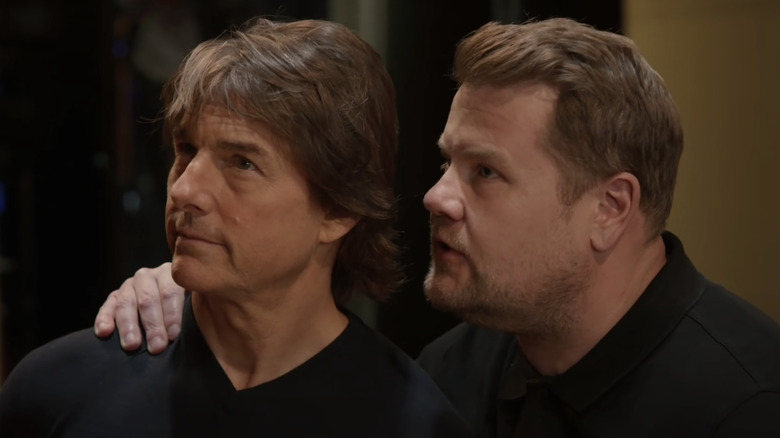
James Corden's time as a late-night host has officially come to an end. And what better way to bid farewell to "The Late Late Show" than to call upon his buddy Tom Cruise, don a meerkat costume, and join in on a Broadway performance of "The Lion King"? Yes, really.
The concept of James Corden and Tom Cruise crashing a Broadway show might sound insane, but just take a moment to truly process those words. In a way, this was the inevitable conclusion of Corden's late-night reign.
Since taking over "The Late Late Show" in 2015, Corden has been finding new (and increasingly strange) ways to combine his love of theater with the star-studded nature of his talk show. This has led to performance-heavy recurring segments like "Carpool Karaoke," "Drop The Mic" and "Riff-Off." When the opportunity arises, Corden's love of Broadway takes centerstage, so it only makes sense for him to snag a Hollywood superstar, embrace the theatrics, and return to an actual Broadway stage.
Why Tom Cruise, you might ask? Cruise has been a frequent "Late Late Show" guest, and his appearances usually involve roping Corden into a death-defying stunt. Together, this unlikely duo has skydived and flown a fighter jet. But at long last, Corden is no longer the one being pushed out of his comfort zone. Now, it's Cruise who's forced to try something new: making his Broadway debut!
The two recently reunited during the CBS primetime special that preceded the final episode of "The Late Late Show with James Corden." Naturally, the segment starts with Cruise getting a "Mission Impossible"-esque video message inviting him to meet up with Corden. Cruise, who I assume starts every morning with a dangerous stunt, is jumping out of a plane at the time. The rest of the bit involves a lot less danger and a lot more singing. Watch below!
Tom Cruise And James Corden Crash A Broadway Show
Leading a blockbuster action franchise? Easy enough. Casually standing on the wing of an in-flight plane? Totally fine. Plummeting to the ground after driving a motorcycle off a cliff? That's just a typical Tuesday for documented daredevil, Tom Cruise. But joining a Broadway show after a single rehearsal? Now that's scary!
It takes more convincing to get Cruise onboard with "The Lion King" performance (he initially tries fleeing the scene), but eventually, he dons his "Lion King" costume just like everyone else. The duo share a Herr Rhino costume while performing "The Circle of Life," and later, they become Timon and Pumbaa for "Hakuna Matata." But forget the grand spectacle of Broadway -- the best part comes towards the end of the video when Cruise decides to get a drink with some hyenas from the cast, and a jealous Corden breaks his heart with a single sentence: "I watched 'Top Gun: Maverick,' and I watched it on a tiny TV in my kitchen, and I didn't even turn off motion smoothing."Again, Tom Cruise and "The Lion King on Broadway" is a very random combination of words, but I can't stress enough how very on-brand this is for Corden's time on the "Late Late Show". He recently told "CBS Sunday Morning" that, in the early stages of planning the show, his idea was to have an hour that "embraces the internet." He advised the network to "make a show that launches at 12:37 but people consume and watch all day, because that's how that audience are consuming their content now." Tom Cruise crashing a Broadway show is exactly the kind of viral-YouTube-video-waiting-to-happen that this show was designed to create.
The final episode of "The Late Late Show with James Corden" aired last night, and you can watch it in its entirety right here. It included guest appearances from Will Ferrell and Harry Styles, lots of bits, and yes, a final musical number to culminate Corden's eight years as a late-night host.
Read this next: The Moments That Defined TV In 2022
The post Watch James Corden and Tom Cruise Crash The Lion King on Broadway as Timon and Pumbaa appeared first on /Film.
Star-Lord Is Searching For The Real Peter Quill In Guardians Of The Galaxy Vol. 3
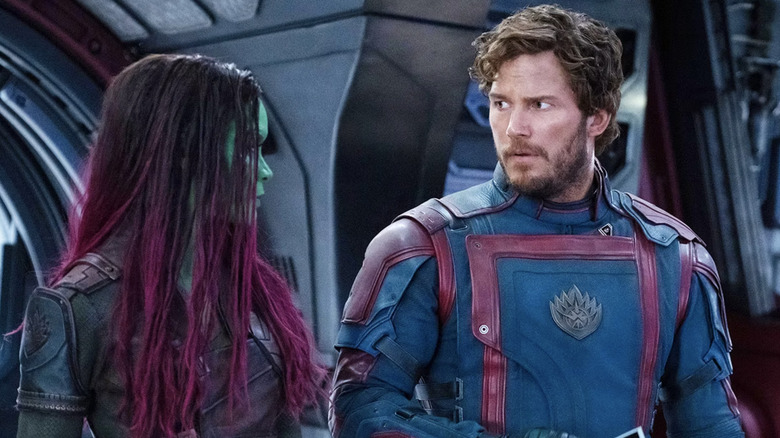
What sets James Gunn's superhero movies apart from the rest is his attention to character. His heroes always begin anything but; rather, they're selfish people broken by the past who find new purpose together. This, plus the right blend of humor and earnestness that most of his contemporaries can never strike, means that Gunn's movies do the "found family" trope much better than other blockbusters.
Aside from some detours in "Avengers" movies (and writing decisions that Gunn contests), the Guardians of the Galaxy have been Gunn's sole purview. That means he's crafted their character arcs as arcs, rather than just whatever characterization the shared universe demands. So where does that leave his lead, Peter Quill/Star-Lord (Chris Pratt) in "Guardians of the Galaxy Vol. 3?"
/Film's Jenna Busch attended a press conference headlined by the "Guardians" cast. There, Pratt spoke about where Quill is at in this comic trilogy capper. Asked if his character is "sad" after the rough ride he's been through across these films, Pratt answered:
"He's lost. He's definitely lost. He's a guy, and there's a wonderful monologue that Bautista gives that comes from Mantis, that Quill is the guy who needs to learn how to swim. He's been hopping from lily pad to lily pad, woman to woman, relationship to relationship. That's a pretty human condition I think. Oftentimes we find ourselves in a relationship or the affiliations we have with a team or a family [...] so he's a guy who's searching for who he is."
In explaining Quill's arc, Pratt emphasized that each movie featuring Star-Lord has been about him trying on a new identity.
Peter Quill So Far
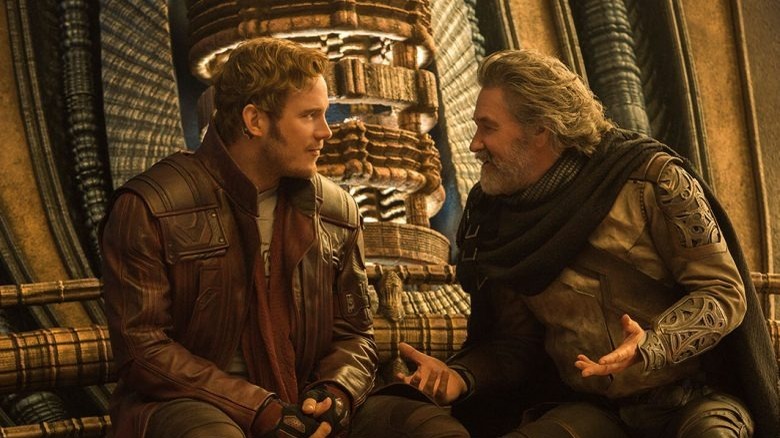
In the first "Guardians of the Galaxy," Quill is a boy who never grew up. He was abducted by the alien Ravagers after the death of his mother Meredith (Laura Haddock). As a child, Quill couldn't hold his dying mother's hand as she reached out for him. So, his new life gave him the chance to run away from his grief by being someone else.
The film emphasized that "Star-Lord" was a name that Quill chose for himself — lots of '80s kids pretended to be Han Solo, but Quill got to take his fantasy a step further. At the end of the film, he's still playing the fantasy of Star-Lord, only now he's a Guardian of the Galaxy instead of an outlaw. It's easy to let your job subsume your identity, especially when it's a job as fun as a galactic adventurer.
In "Vol. 2," Quill finally meets his father, the (literally) planet-sized Celestial Ego (Kurt Russell). As Pratt noted, Peter starts to reorient his identity around his father. When he learns Ego actually has designs to destroy the universe, Quill rejects him: he chooses humanity over godhood and even accepts the late Ravager Yondu (Michael Rooker) as his real father.
Then Peter and Gamora (Zoe Saldana) get together, but she dies in "Avengers: Infinity War." Worse, she's been replaced by an alternate-timeline duplicate who doesn't know Peter, which only reminds him of what he lost. So where does Star-Lord stand now? "He's realizing that all of these various people that he's found that are Quill," Pratt said, "None of them are the real Quill." Who is the real Quill? We'll just have to find out alongside Peter himself in "Vol. 3."
"Guardians of the Galaxy Vol. 3" arrives in theaters on May 5, 2023.
Read this next: The Most Brutal Moments In The MCU Ranked
The post Star-Lord Is Searching For The Real Peter Quill In Guardians Of The Galaxy Vol. 3 appeared first on /Film.
System Shock Q&A – The Difficult Journey of Remaking a Classic, from Guatemala to Atari

In an age where remakes and remasters dominate much of the game release schedule throughout the year, one of the most seminal games of all time, System Shock, is finally about to come back to the market as a whole new product.
Despite the May 30th launch date on PC, there's not much fanfare around it, perhaps due to the project's known problems and delays (it was first announced in 2015). In a 45-minute-long conversation over Zoom, I recently had the opportunity to go through the whole behind-the-scenes process of remaking System Shock from its very inception with Stephen Kick, Game Director and co-founder of Nightdive Studios, and Larry Kuperman, Director of Business Development.
It was a long and interesting chat, during which we also touched upon the current schedule for the console ports, some possible post-launch additions like New Game+, what's next after this remake, the impact of the recent acquisition by Atari, and even a brief update on the live action TV adaptation. Strap in.
Let's begin by addressing the elephant in the room. People have been waiting to play this System Shock remake for a very long time due to multiple delays. What happened?
Stephen Kick: System Shock has been in development not for seven years but closer to 11 years. Back in 2012, I was still working at Sony as a character artist and my girlfriend at the time, who was also a character artist, decided that she was pretty much done with the video game industry after a pretty short stint and convinced me to pack up everything we owned into a Honda Civic and drive across the border in Mexico.
It was cool. It was really scary. We spent the next ten months going through the entirety of Mexico and Central America. One night, when I was in Guatemala, I decided to play some classic video games. They were what originally inspired me to become part of the industry and are still a big love of mine. I tried to boot up System Shock 2 and I couldn't get it to run, so I went, like any normal person would do, to GOG.com. I figured it's one of the best games ever made; it's got to be available for purchase.
I discovered that it was the most requested title in GOG's catalog. So, I decided to do some digging and found that the rights had been transferred to the Meadowbrook Insurance Group. I reached out to their general counsel and discovered that they had not only the rights but had recently acquired the trademark and were looking for some way to commercialize the game so they could hold on to those rights.
At first, they asked me if I wanted to do a System Shock game. But, being miles into a jungle with $5,000 to my name, it was out of the question. I recommended that we just re-release the games on digital storefronts like GOG and Steam. There was a very quick back and forth with the contract. I had to convince friends and family to lend me enough money to pay for the license and the game went on sale on Valentine's Day 2013.
It was a smash hit, and it opened up the possibility of going out and spending my time doing the same for other games you can no longer commercially purchase or run on modern machines.
Larry Kuperman: That starts off Nightdive Studios. A year later, right after GDC 2014, I joined the company. My first task was to acquire the remaining System Shock rights so we could do more with the games. That took well over a year of working with that insurance company's attorneys.
I will tell you that for a long time, I have had weekly phone calls every Friday. I kept calling the attorney, saying, are we ready to do business? Finally, we acquired the remaining rights.
The next question is, what do we do with it? That takes us up to the point where we announced that we would do a remake of the original System Shock game. In order to do that, we needed to do a Kickstarter.
That was quite successful, right?
Larry Kuperman: Yes, and one of the reasons it was so successful was we had a clear vision. We put together a team and we created a demo running in Unity. The fact that we were showing what people were backing and what we hoped the finished version would look like led to the success of Kickstarter's success. We reached and exceeded our goal on that and then began the work of actually creating the game.
People from that original team were called to other things, so we had to put together a new team to fulfill that vision. The first thing that we did not anticipate happening was we had really come up against the wall for what Unity could do at the time. We always knew that we wanted the game to be on PC, but also on Xbox and PlayStation consoles. We wanted to have a consistent frame rate across all devices. At that time, I know it's improved since then, but at that time, that really was pushing Unity beyond the limits of what it could do.
That was the first change. We transitioned over from working in Unity to working in Unreal, which would be able to help us realize that vision. That also was a setback and there was some delay, but we eventually had a team in place again after hiring some new people. Throughout all of that time, we were posting updates to the System Shock community via the Kickstarter page.
As the team was working on the game, there was a temptation that I think is universal when you work on remakes of classic IPs, which is to put your own signature and imprint on the game to make things work according to your vision.
That's when it began to drift off from what we had shown originally and what we had promised to people. The feedback that we began to get was that this isn't what people wanted, that it was something different from what we had shown and promised. That led to a number of heated discussions with the team.
We were also quickly burning through the money we had raised on Kickstarter, so there was a financial concern about it. At any rate, at that point, we knew that things were not working the way we wanted them.
I guess that was in early 2018 when you announced System Shock would go on hiatus.
Larry Kuperman: Correct. It's funny, I thought everyone knew that that hiatus meant a pause, not an ending. But the news came out that we were abandoning the game, that we were terrible people and had squandered everybody's money. None of that was accurate.
The team had gone off in a direction that we did not want them to. We took responsibility for it and ultimately, we probably should have been more hands-on than we were at the time. We learned a lesson from that. Very quickly, we put together a new team and by GDC of that year, we actually showed off a demo running in Unreal that was much closer to and very true to the System Shock vision of what we had originally shown.
Time goes on; we're continuing to work on the game. It was not only Nightdive, certainly, it was worldwide and industrywide, but of course, then came COVID. There was social unrest, there was a pandemic, there were acquisitions, and people were being hired away by other companies who had allowed them to work on our project as well. Then that company was bought by somebody else. There was a lot of that during the COVID period. That said, our team continued to be productive and it continued to work forward on the game, but by that time, it was taking longer than our fans wanted.
It's natural for gaming fans that they want every game to be done today if not yesterday, right? The other thing that people perhaps were not aware of is where was the money coming from that was paying this development team.
Nightdive was funding all of the development by that point. Fortunately, we have a successful business, and we were doing other things. We have multiple teams, and so we were producing the games that are perhaps best associated with Nightdive, like Turok 1 and 2, we had Strife, we had multiple other titles and the revenues from that were funding the continued development of System Shock. That brings us up pretty close to where we are today.
Along the way, we began working with a publisher, Plaion. That has been a very positive relationship for us. The game is now in the final stages of being polished. Much of the work that is going on behind the scenes now has to do with localization.
This is a big stretch for us. Typically, we have only supported the European languages, EFIGS as people say, English, French, Italian, German, and Spanish. We are supporting System Shock with something like 14 languages. We're planning on having worldwide distribution and we want as many fans regardless of where they live regardless of their language, to be able to play and enjoy the game.
Once the PC version is finished, we've already had prototypes of the console versions, those are already in testing. But we want to make sure that the game is as close to perfect as we can make it for all versions so that people can play it on PC, Xbox, and PlayStation.
Just a quick follow-up on that. Are you still planning to release System Shock on last-generation consoles or will it be just PlayStation 5 and the Xbox Series S|X?
Larry Kuperman: It's going to be on both generations, particularly with our audience which is retro gaming enthusiasts. That's our core audience. Although of course, this game will certainly expand Nightdive's audience, many of them have not upgraded and we want people to be able to play it regardless of how they want to play it.
What are the odds of a Nintendo Switch port?
Larry Kuperman: It's probably a bit early to talk about that, but it's certainly something that has been discussed. The only thing that I can say at this point is to stay tuned.
Fair enough. It was a long development phase, for sure. Can you discuss what kind of changes you have made compared to the original game and maybe also which ones were inspired by the community's feedback through the Steam demos you have released over the years?
Stephen Kick: We implemented a number of changes from the original just to make the game more user-friendly. One thing that kind of inspired this whole project was the addition of mouse look in the original. It didn't have that when it initially came out in 1994. Instead, you had to drag the mouse to the edge of the screen to look around.
We worked with a modder in the System Shock community to inject the ability to have mouse look. We immediately found out that the game had been changed so dramatically that it became accessible to just about everybody at that point. We had new players come in and really enjoy themselves immensely. That kind of sparked the initial idea of, wow, that's all that it took to make this game more playable and more accessible and just more fun.
Well, what if we did this, what if we did that? The next iteration was getting the source code of the game and porting it to our test engine and adding even more features to make it more accessible. High-resolution support, widescreen support, stuff that would normally be pretty standard in any remaster. Then from there, our discussions went well, this game is really underrepresented. It inspired so much that we owe it to the legacy of not only System Shock but of Origin and Looking Glass and Irrational to bring this game back for people to truly appreciate it. That's when we brought on, like Larry said, the initial Unity team and we did the prototype. That's when we knew that we had something very special.
Aside from just adding mouse look, one of the other major things that we changed was the overall user interface and the user experience. In the original, it was very obtuse and made it hard to understand what was going on.
If you weren't savvy or you weren't aware, you wouldn't notice that certain panels that had vital information would kind of switch around on you and just be all over the place. That was by design, but again, that was something that we wanted to standardize. We took the lessons that were learned between System Shock 1 and 2, which came out in 1999, 5 years later, and we brought that back to the original game.
Now we've got more or less a hybrid of the two inventory systems. We feel like we've struck a really great balance between a modern game and something old-school that's reminiscent of those old games. What we have now is essentially something more like the Resident Evil remake where you've got a grid-based inventory and everything is clearly visible and you can move things around.
Long answer to your short question, but the user interface, the inventory system, all those have changed.
I think you also introduced the dismemberment system, correct?
Stephen Kick: Yeah. There wasn't any dismemberment or anything like that in the original, but there were graphics, let's just say to suggest that some really gory, nasty things had happened to the people on Citadel Station.
We wanted to pay homage to that by implementing a dismemberment system so that corpses and enemies reacted accordingly when subjected to explosives.
Can you talk about how you've modified Cyberspace?
Stephen Kick: This goes back to your initial question too about things that we changed. Cyberspace was definitely the subject of a lot of upgrades and changes from the original, which while a very novel and very fun mini-game, was just hard to control and hard to understand where you were going and what the objective was.
Again, we looked to games that came out well after the original System Shock that did it differently and, you know, better. We brought that back to the original. Now you've got something more akin to Descent where you're controlling like a ship and you have six degrees of freedom to move around in the space, to navigate it. The objectives are clear, the directions and where you can go are clear and it's proven to be much more than just a mini-game. It's a major part of the critical path for the remake.
We've touched on things that we've changed. There's a lot we didn't change on purpose, as old-school games did a lot less hand-holding than many modern games. You're gonna be challenged, you're going to have to figure things out.
The only I'll give is listen to those audios. One of the things that I've enjoyed is that people miss things or they go past something, they don't know what to do, they'll die in the game but then they immediately restart to go back. That's what we want; the game has to be challenging. It has to have that right level of frustration that makes you want to try another time to overcome obstacles.
Do you think the length will be the same as the original System Shock?
Stephen Kick: It's definitely a lot longer. One of the things we had to change was the placement of the audio logs because in the original the movement speed and just the pacing are much slower due to how cumbersome the movement was. We had to adjust the spacing of all the audio logs because in this modern game, you're moving at a quicker pace and you're able to explore a lot more easily, so you're picking up a lot more logs all at once and the player is just sitting there listening to something instead of playing the game.
We had to spread that out quite a bit, but a new player can expect somewhere between 16 to 20 hours of gameplay if they want to explore and do everything. There's even difficulty modes that we've implemented where if you want a real challenge, there's a timer that has a real-time effect in the game where you'll lose the game if you don't beat it within like eight hours.
There's some variables that we've introduced that are going to either elongate your playtime experience or make it artificially shorter to add to the challenge.
Will there be something like a New Game+ mode?
Stephen Kick: There may be a New Game+ that we introduce after launch. As it is right now, just like the original, there's a difficulty mode that you can alter.
You've got variables for the four parts of the game. There's combat, hacking, puzzles, and cyberspace. Each of those has three levels of difficulty that you can change at the beginning of the game, depending on the kind of experience you want.
Larry Kuperman: We're concerned that the users can customize it to how they wish to play. I think that that also adds a whole new level of replayability.
Speaking of replayability, what about PC modding? Is it something you will support, or just leave it to the community?
Stephen Kick: It's something that we would like to support in the future. System Shock is not gonna be moddable out of the box due to using the Unreal Engine, but I'm sure some individuals will find a way to modify the game not long after launch.
Larry Kuperman: Let me give you a slightly different answer to that. We're not going to be doing that at launch, but if some of our fans would choose to implement that that is not something that we would in any way stop or impede.
Fair enough. I've read some feedback from the forums, Reddit, et cetera. A few people weren't too happy about the pixelated look. Is there any chance you'd make it optional in the settings?
Larry Kuperman: The art style was a very deliberate choice on our part. We brought back Rob Waters, who was the original artist. In terms of the pixelated look, Nightdive is all about the preservation of classic games and the way they looked and felt. It was a very deliberate choice.
We want players to recognize that at the core, this is a homage to the great games that have influenced so much of today's gaming environment.
We listen very closely to our backers, particularly our Kickstarter backers and people on all the forums. We've seen that on Reddit as well. We understand if you're purely a modern gamer, if you're somebody who has never played any of the classic games, the art style is going to appear unusual to you.
On the other hand, if you are somebody who has come up through those games or has familiarity with the way classic games looked and felt, you're going to look at the art style on it and go, I get it. It's a recognition that this is a remake of a title that originally came out in 1994, and we don't want people to forget that.
On that note. Do you believe remaking this story about Shodan in this age where AI is really close to entering every aspect of our lives is a particularly good time to introduce the classic IP to the newer generations?
Larry Kuperman: I think that's very accurate. It would be great if I said that the timing of this game, which is about a rogue AI, coming out at a time when half the universe is concerned about the development of a rogue AI, was intentional on our part. It wasn't, but this is certainly the right game for this time.
Will you support NVIDIA DLSS and/or AMD FSR and Intel XeSS?
Stephen Kick: We are gonna support DLSS 2, that's already available in the demo out there now. We are evaluating DLSS 3. As for ray tracing, that is something that we're gonna have to look at a little more closely, Due to the art style that we've got, ray tracing is not gonna have any noticeable improvement over the lighting that we've got.
You're also making System Shock 2 Enhanced Edition, right? Some people would like to know if you will add the controller support from this remake to that game as well.
Stephen Kick: That's the plan. The idea is that System Shock 2 Enhanced Edition will be cross-platform, so you'll be able to play it on Xbox, PlayStation, and Nintendo Switch like all of the other remasters we do on that team.
Is the controller support going to be available on PC as well?
Larry Kuperman: Yes, absolutely.
Going back to the System Shock remake console ports, will they be out this year?
Larry Kuperman: That's something that we've been working very closely with our publisher to achieve. We expect them to be on the shelves for the holiday season.
I'm hoping you can discuss the news of Nightdive's $10 million buyout from Atari. How does this affect System Shock and your future as a studio?
Larry Kuperman: We've had a long relationship with some of the key people at Atari. People should be aware that Chairman and CEO Wade Rosen, for example, has been involved with Nightdive Studios for years, in a very hands-off capacity, for the reason that he's a big supporter of what we do.
There was a lot of thought that went into this partnership. One of the motivations on our part was we've now partnered with a company that wants us to keep on with what we have been doing only to do more of it, to put that on a bigger stage.
Does this acquisition take off a bit of pressure on the success of System Shock?
Larry Kuperman: It both takes off some pressure and since this will be the first title that will be coming out under the new banner, so to speak, it adds another layer of pressure as well.
Let's say that the System Shock remake launches as you hope, as a success. What's next? A lot of people are already doing wishlists for a System Shock 2 remake. Have been thinking about it?
Larry Kuperman: We have. I'm not ready to make that commitment. Our team is really heads down focused on the System Shock game that we have to get out.
But of course, the question about what will be the next game has come up a couple of times. We currently have three other titles in production from our other team. We're gonna have a very busy 2023.
We have our calendar set for 2024. That said, the success of this game will in many ways dictate what the future is for other titles in the franchise or other titles outside of that franchise.
One last question - is there any news on that System Shock live-action TV adaptation announced a couple of years ago?
Larry Kuperman: It did not pan out as intended. We are currently working with a team, but nothing is final as of yet.
Thank you for your time.
Star Wars Jedi: Survivor PC Players Get an Apology, No One “Comprehensive” Fix Says Respawn

Star Wars Jedi: Survivor is, unfortunately, the latest in the seemingly unending stream of bad PC ports. Performance is poor, even on the highest-end machines, leading to the game picking up a “Mostly Negative” user score on Steam. Well, thankfully, Star Wars Jedi: Survivor developers Respawn Entertainment aren’t blind to the complaints, issuing a statement and apology to PC players. That said, they also warn there’s no magic bullet solution to the game’s issues on PC.
“We are aware that Star Wars Jedi: Survivor isn't performing to our standards for a percentage of our PC players, in particular those with high-end machines or certain specific configurations. For example, players using cutting-edge, multi-threaded chipsets designed for Windows 11 were encountering problems on Windows 10 or high-end GPUs coupled with lower-performing CPUs also saw unexpected frame loss. Rest assured, we are working to address these cases quickly.
While there is no single, comprehensive solution for PC performance, the team has been working hard on fixes we believe will improve performance across a spectrum of configurations. We are committed to fixing these issues as soon as possible, but each patch requires significant testing to ensure we don't also introduce new problems. Thanks for understanding and apologies to any of our players experiencing these issues. We will continue to monitor performance across all platforms and share update timing as soon as it is available.”
While the PC is the major problem platform for Star Wars Jedi: Survivor, the game isn’t perfect on consoles either, with Performance Mode being a particular sticking point. You can get more details on Star Wars Jedi: Survivor on Xbox Series X/S and PS5 here. Despite the game’s issues, Wccftech’s Kai Powell still found the game to be a solid, if not exactly groundbreaking, experience in his full review…
“Cal Kestis' latest journey, this time to seek out a long-lost Jedi stronghold on Tanalorr, should feel intimately familiar to fans of Jedi: Fallen Order. Star Wars Jedi: Survivor builds upon the successes of the original title but could do more to stand up on its own merits.”
Star Wars Jedi: Survivor is available now on PC, Xbox Series X/S, and PS5.
Do Electric Vehicles Have Differential Oil Like Combustion Cars?
Electric vehicles are known to require less routine maintenance compared to internal combustion vehicles. With EVs, you can say goodbye to regular engine oil changes, but what about differential oil? Do electric vehicles even have differentials, and do they require oil changes?
AMD Ryzen 7000 & Ryzen 7000X3D CPUs Show Very High Power Draw When Running Idle
![]()
AMD Ryzen 7000 & Ryzen 7000X3D CPUs seem to have very high power spikes even when running in idle mode, as discovered by Hardware Busters & Igor's Lab.
AMD Ryzen 7000 & 7000X3D 3D V-Cache CPUs Show Intense Power Spikes & Higher Power Draw Even When Running Idle, AGESA 1.0.0.7 BIOS Fixes & Addresses Some of These Issues
Although AMD has discovered the root cause of the burnout issues that are currently affecting several users and their Ryzen 7000 / Ryzen 7000X3D CPUs, some tech outlets started their own investigation and discovered something interesting. The testing done by Hardware Busters and Igor's Lab seems to show that at idle, the latest AM5 chips produce very high power spikes that might not be related to the burnout issue but something that could be addressed by AMD & its partners in future BIOS updates.

The testing was done using the Powenetics v2 system for testing which allows full measurements of power including transients. Transients have been a topic for a long time but the recent ATX 3.0 push made it come to the limelight as most PSU manufacturers showed how the newer standard has been designed to tackle these high transient specs that can be up to 4x the typical usage and power load.
For testing, a variety of AMD Ryzen 7000 & Ryzen 7000X3D CPUs were tested, & the most extreme case of these high transient spikes was seen on the Ryzen 9 7950X3D CPU. The CPU sipped an idle power draw of 130.04W (peak) which is above its nominal TDP of 120W and also far above its idle average which sits at around 50W.
AMD Ryzen 9 7950X3D CPU Power Metrics (Image Credits: Hardware Busters):
| State | Power Consumption |
| Idle Peak (PBO/CO-15) | 130.04W (124.73W) |
| Idle AVG (PBO/CO-15) | 50.531W (45.952W) |
| Blender Peak | 189.586W |
| Prime95 (small FFTs) Peak | 170.352W |
The AMD Ryzen 9 7900X also saw an idle power consumption of 109.005W at the peak which is almost twice its average idle consumption of 63.798W. The Non-X Ryzen 9 7900 also saw a 95W idle peak whereas the average idle draw is around 48W.
AMD Ryzen 9 7900X CPU Power Metrics (Image Credits: Hardware Busters):
| State | Power Consumption |
| Idle Peak | 109.005W |
| Idle AVG | 63.798W |
| Blender Peak | 254.577W |
| Prime95 (small FFTs) Peak | 227.34W |
AMD Ryzen 9 7900 CPU Power Metrics (Image Credits: Hardware Busters):
| State | Power Consumption |
| Idle Peak | 94.354W |
| Idle AVG | 48.636W |
| Blender Peak | 137.948W |
| Prime95 (small FFTs) Peak | 128.404W |
I tested the CPUs above in three mainboards from Asus, MSI, and Gigabyte. You will find more details on the test systems in the corresponding reviews, and so far, I didn’t pay great attention to the IDLE readings because I didn’t encounter any issues. But as it seems, some power spikes occurred, and thanks to the Powenetics system, which I have connected 24/7 on my test systems and the logs I keep, I found them now that this problem came to the surface.
I didn’t face any burnt components, though, as the users on Reddit and YT reported, but during the short time, 15-20 minutes, that I measure power consumption in idle, these spikes occur in the 7950X3D processor; there might be even higher spikes during prolonged idle periods. From the moment the mainboard manufacturers started releasing BIOS to cope with this issue, it won’t be anything important if you ask me. I’ve already talked to some of my industry contacts, who told me that the RMA rates of the 7000 series are lower than those of the 5000 series, so don’t let these stories prevent you from getting a new AMD CPU.
Now for those already running an AMD Ryzen 7000 or 7000X3D CPU, this shouldn't be much of a concern as AMD is readying a new AGESA 1.0.0.7 BIOS firmware with lots of power tuning & other optimizations that should address several issues but the specific fix for this issue might have to wait for a while since the memory management, boot times and protection against burnout are more important. Expect more updates in the future.
AMD AGESA 1.0.0.7 BIOS Firmware Changelog (Image Credits: Igor's Lab):
Great, just what the overpopulated Earth needs right now: extending the human lifespan by 80 percent [Interesting]
NASA Chief Explains SpaceX Explosion To Congress – Next Launch In ~2 Months

In a House hearing earlier today, the National Aeronautics and Space Administration (NASA) Administrator Bill Nelson shared details about SpaceX's plans for the Starship rocket. The former astronaut and senator from Florida outlined to the House Committee on Science, Space, and Technology that following SpaceX's fiery Starship rocket test last week, the company has informed him that it plans to make the next attempt in just two months from now. Administration Nelson's appearance before Congress was part of a hearing conducted for NASA's budget request for the fiscal year 2024, and he assured members that SpaceX is a "hardware rich" company that can afford to blow up rockets during tests.
SpaceX Says It Will Have Starship Ready For Launch In 2 Months Says Administrator Nelso
Right off the bat, committee chairman Rep. Frank Lucas (R-OK) started the conversation by asking Administrator Nelson about NASA's plans to land astronauts on the Moon and what key technologies might prevent it from meeting its timelines. In response, Nelson shared that one hurdle was a budgetary decision by NASA to reuse the avionics from the Orion ship for the Artemis 1 that flew last year for the ship for Artemis 2. This, according to him, has created a two-year delay between the two missions, which could have been avoided had NASA developed two sets of avionics.
The Administrator then shared estimates SpaceX provided him about what's next for the Starship program:
Now the big driver there is we know we've got Orion, the capsule, and the rocket, because we've already tested that. But we're going into lunar, polar, elliptical orbit, and we're gonna rendevous with a SpaceX lander. And the SpaceX lander is a developing program of which in the state to the south of yours, Mr. Chairman, and it blew a hole in that launch pad! So, I have asked, so I can report to you, as of today, that SpaceX is still saying that they think it will take about, at least, two months, to rebuild the launchpad. And concurrently, about two months to have their second vehicle ready to launch.
Now understand that the explosion that's not a big downer in the way that SpaceX does things. They are hardware rich, meaning they've got a lot of those rockets ready to go. And that's their modus operandi. They launch, if something goes wrong, they figure out what it is. They go back, and they launch it again. So I anticipate that we will see a number of launches from Boca Chica, Texas and then they're going to bring that rocket to Bill Posey's and my home county and launch it there after they have already proven and had the experience. So, I'm fairly confident, but there are a lot of things that still have to be done.

The hearing then progressed to ranking member Zoe Lofgren (D-CA) asking Mr. Nelson whether recent budget cuts would affect NASA's Moon programs. On this front, he outlined that if there was a 22% budget cut, America would fall behind its rivals in space exploration.
Representative Lofgren then commented on the SpaceX Starship test and stated:
Okay, thank you very much, Administrator Nelson. You know I must say when I saw that rocket blow up, I thought thank god there's no people on board. Sometimes the lowest bidders aren't always the best choice.
Rep. Bill Posey (R-FL) added to this and shared that he was grateful that the rocket did not explode over NASA's Kennedy Space Center in Florida.
As the question shifted to America's competition with China and Russia, Mr. Nelson said he was worried that China would get to the lunar South Pole before his agency. He believes that China might not allow anyone else access to the area in such a scenario since the Chinese space program is primarily a military program.
SpaceX's Starship uses a stunning 33 Raptor 2 engines to power itself during flight. This is the largest number of engines used on a rocket in human history and the first time a private company has attempted such an endeavor. Starship is also twice as powerful as NASA's Space Launch System (SLS) rocket for the Artemis program. Its second stage is also the first time this component is designed to be reusable - significantly driving down launch costs in the process. Additionally, the Raptor 2 engines are the first time that engines of their kind have been built by America.
Untangling the Complexity of SaaS Ownership in the Enterprise

Before SaaS, employees had to rely on IT and other teams to procure software, which gave the organization a direct way of controlling such purchases and deployments. Now, employees can sign up for SaaS applications without involving anyone in the company. All it takes is a few clicks and (sometimes) a credit card for people to start using such products. In moments, SaaS apps can start processing sensitive business data with no consideration for security, governance, oversight, and other requirements that are at the top of the minds of CISOs and CIOs.
The lack of internal bottlenecks empowers people to quickly get the tools they need to get work done. However, Finance, IT, Legal, and other teams lack the visibility to ensure that SaaS apps are provisioned and managed responsibly and securely. No longer the gatekeepers, these teams must revisit the approaches to guiding and overseeing the company’s use of SaaS.
What can we do to support the use of SaaS within the enterprise, but do so in a responsible way?
Security, IT, and SaaS "Ownership"
There are several reasons why SaaS ownership is challenging for IT and security teams.
Employees can start using SaaS applications without any involvement from IT and security teams. As a result, these teams are often unaware that the applications are being used and don’t know about the associated risks. For example, we might not realize that a SaaS provider now processes sensitive data and cannot configure the appropriate security measures with the app. On their own, end-users often lack the expertise to configure the apps in a way consistent with the organization’s policies.
Another challenge is the lack of a clear understanding of the roles and responsibilities of “owning” a SaaS application:
- Who is responsible for adding new users to it and assigning them the appropriate permissions?
- Who will revoke access when the need arises?
- Who will handle renewal and other licensing discussions?
End-users who initially purchase a SaaS product might expect IT or other teams to handle all or some of these responsibilities, but these teams might not share this understanding.
In addition, modern SaaS applications rarely function as data siloes. They often integrate with other software. The individuals who bring SaaS into the organizations often do not consider such interdependencies and dataflows. Late-stage discovery of such externalities can put unexpected burdens on IT and security teams and prevent the SaaS application from achieving its full potential.
Clarifying SaaS Expectations
IT and security teams should document the roles and responsibilities of deploying and maintaining a SaaS application. Explain what aspects of the IT team will own, such as the app’s configuration and security oversight. We should clarify what responsibilities might reside with the end-users. For example, depending on how the app integrates with the company’s identity management system, IT can automatically provision users with the proper privileges into the SaaS app; in other cases, designated people outside IT might need to do this.
Also, we should clarify the company’s expectations of SaaS applications:
- What security requirements does the organization impose on its SaaS providers?
- How might these requirements differ based on the sensitivity of the data they process?
- What are the service-level expectations, Single Sign-On (SSO) requirements, etc.?
- What other internal teams, such as Legal and Finance, might need to be involved and when?
We should document these expectations so that people looking at SaaS know what they need to do or communicate to SaaS providers.
In addition, we should recognize that unsanctioned SaaS products will find their way into the organization. Consider what approaches and tools we might use to discover their existence, so IT and security teams can bring the necessary oversight to their usage to protect the organization and support end-users. (Axonius, where I lead the security program, offers a solution for this.)
Collaborating with SaaS Stakeholders
One way to start the discussion of SaaS ownership is to identify common interests. Most likely, all stakeholders want to have a SaaS application that is correctly deployed and properly licensed. It should be available to the right people with the expected functionality. The stakeholders will probably agree that the app should be responsibly secured and not expose the organization to unexpected or undesirable risks.
Next, we can outline what one-time and ongoing tasks should happen for the organization to meet the identified objectives. With these responsibilities at hand, we can discuss who is best positioned to handle them, how, and when. We can also assign responsibilities according to the RACI model, which calls for agreeing on who should be responsible, accountable, consulted, and informed about the tasks.
Why Sigourney Weaver Is Done Playing Ellen Ripley In The Alien Franchise
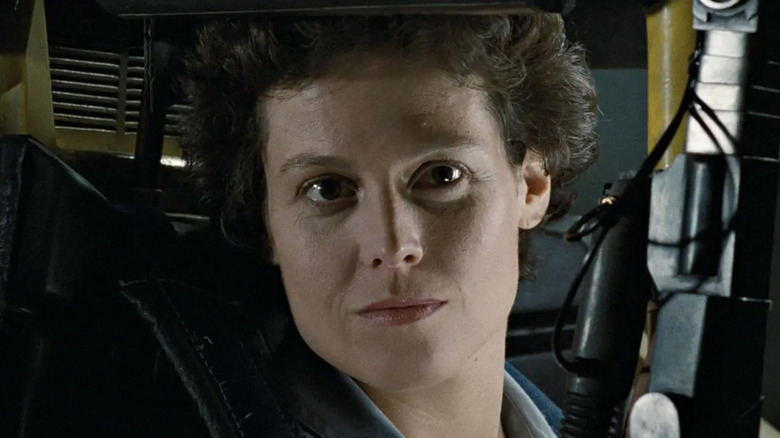
When screenwriter and filmmaker Dan O'Bannon wrote the original "Alien," he couldn't have imagined that his own personal experience dealing with Crohn's disease -- which helped inspire the chest-burster Xenomorph -- would go on to spawn six of the most thought-provoking sci-fi horror movies in cinema history. O'Bannon's own fears eventually transferred over to the character of Ellen Ripley (Sigourney Weaver), who became terrified of suffering the same horrible fate as Kane (John Hurt) aboard the Nostromo.
Over the course of Ridley Scott's "Alien," James Cameron's "Aliens," and David Fincher's "Alien 3," Ripley's worst fear was finally realized when she dove into a fiery pit, just as a chest-burster struggled to get free from her grasp. Returning as a clone in Jean-Pierre Jeunet's "Alien: Resurrection," Ripley's humanity was then stripped away in favor of a disconnected superhero version of the character that took away everything fans loved about her in the first place. Even after that ambitious but failed attempt to continue Ripley's storyline, Weaver has always been the face of the franchise. And now, it appears as though any chance of ever seeing her in the role that made her famous is growing more and more unlikely.
Weaver hasn't officially been a part of the series since Scott took the films in an entirely different direction with "Prometheus" and "Alien: Covenant" -- the prequels that were supposedly going to lead up to the events of the original "Alien." Bigger ideas about the origin of life and Scott's continuing fascination with artificial intelligence made his prequel films more philosophical in nature, although that also made it harder to imagine how a character like Ripley might fit into the bigger "Alien" picture going forward. Weaver seems acutely aware of this fact, which is why she plans to formally retire as Ripley for good.
'That Ship Has Sailed'
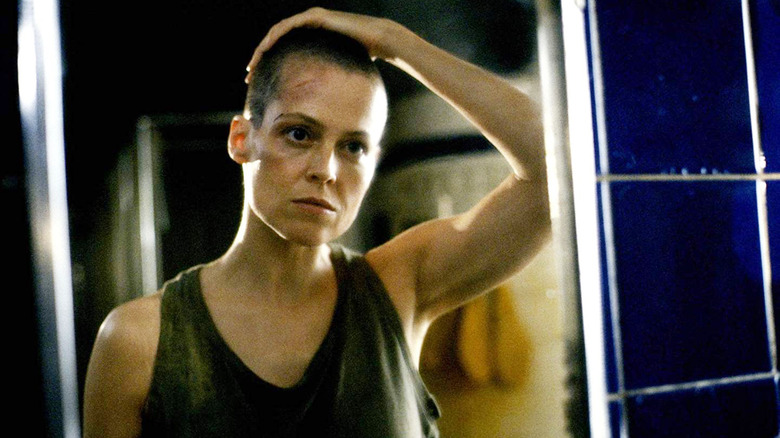
In an interview with Total Film magazine, Sigourney Weaver was asked the unavoidable question that she's basically been asked every time she promotes something new nowadays: Will she return as Ripley in a future "Alien" film? Her answer was decidedly final on the matter. It seems as if Weaver is ready to let the next generation take up the controls:
"There are all kinds of younger actors taking this kind of role. And there was an 'Alien' [film] that I really wanted to do with Neill Blomkamp and we didn't get to do that, but, you know, that ship has sailed."
Please don't remind us of the "Alien 5" idea that wound up never happening! If you recall, Blomkamp ("District 9") wanted to essentially reboot the franchise, ignoring the beginning of David Fincher's "Alien 3" -- wherein Hicks and Newt are already dead on arrival when Ripley crash-lands on the prison planet Fiorina 161. A few years back, some concept art began trickling out, giving fans a sense of what could have been if Hicks and Ripley had been re-united onscreen. Weaver seemed genuinely excited about the chance to do another direct sequel to "Aliens" but the project was eventually put on the back-burner while Ridley Scott proceeded with his own prequels. The project remains one of the most fascinating "What if?" scenarios in "Alien" history, but time has unfortunately moved on.
In any case, Weaver appears perfectly content to keep Ripley in the rearview at this stage: "I'm very happy doing what I'm doing. I put in my time in space!" She certainly has.
'I Was Very Lucky'
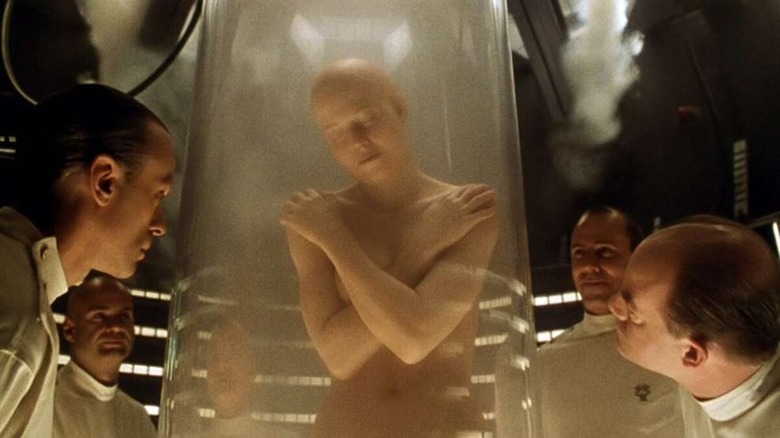
Honestly, after the bizarre experience Sigourney Weaver probably had to endure during the production of "Alien: Resurrection," she definitely needed a nice long break from the character. The underwhelming response to Jean-Pierre Jeunet's experimental take on the material didn't exactly reignite the franchise, and the same can be said for Ridley Scott's last entry, "Covenant" (itself more of a mashup between the grand design put forth with "Prometheus" and the remixed action beats of the first "Alien").
With Fede Alvarez now working on an "Alien" film reportedly featuring all-new characters, Weaver acknowledged how fortunate she was that Scott, and by extension Dan O'Bannon, created such a memorable female archetype that still has so much cultural impact to this day. "They made Ripley a woman, without making her this helpless creature," she told Total Film. "Because I think I was very lucky. These were men who were creating this woman character, but they liked and respected strong women."
The world of "Alien" will always be Scott's baby and Weaver will forever be associated with her Oscar-nominated role. Still, it will be fascinating to see if Noah Hawley (of "Fargo" and "Legion" fame) can bring the property back to its horror roots in his upcoming, long-awaited TV series that's still expected to arrive in 2024. Perhaps Weaver will make a cameo or even direct an episode? The show should absolutely include some female directors , and it would make so much sense to see Weaver be involved in some way creatively -- although seeing Ripley again is highly unlikely, considering the series reportedly takes place years before she was alive. Scott is also involved as a producer, although he's already said "It'll never be as good as the first one." And you know what? He's probably right.
Read this next: 20 Movies About Aliens That You Definitely Need To Watch
The post Why Sigourney Weaver is Done Playing Ellen Ripley in the Alien Franchise appeared first on /Film.
Experimental JRPG Live A Live finally arrives on PC after 29 years

Live A Live was originally released in 1994, but only on SNES and only in Japan. It was short as far as Square Enix JRPGs from the period go, but was unique in that it featured 8 inter-connected stories set across 8 time periods.
Last year, a remake brought the game to Nintendo Switch, and as of today it's also available on Steam.
Evil Dead: The Original Trilogy Revisited
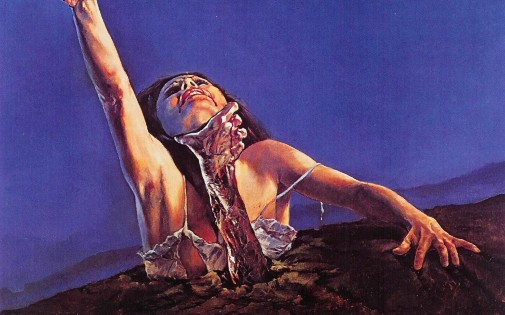
As tentpoles falter and prestige fare fails to perform, horror continues to prove a safe investment for Hollywood. You won't find me complaining about that last bit, for scary movies have long won my affection. And yet, while celebrating box office success, it's distasteful to meander in mercenary matters. Instead, let's consider a new sensation in Evil Dead Rises, the fifth film in the horror franchise Sam Raimi birthed at the dawn of the 80s. Indeed, while these deadite-infested movies have strayed away from detailing the adventures of Ash Williams – check out the TV series Ash vs. Evil Dead for more of that – the original trilogy continues to have a special place in fans' hearts.
So, join me as I revisit Raimi's first ventures into gory horror, horror comedy, and medieval fantasia…
Breaking Down All The Rings Of Power From Amazon's Lord Of The Rings Series
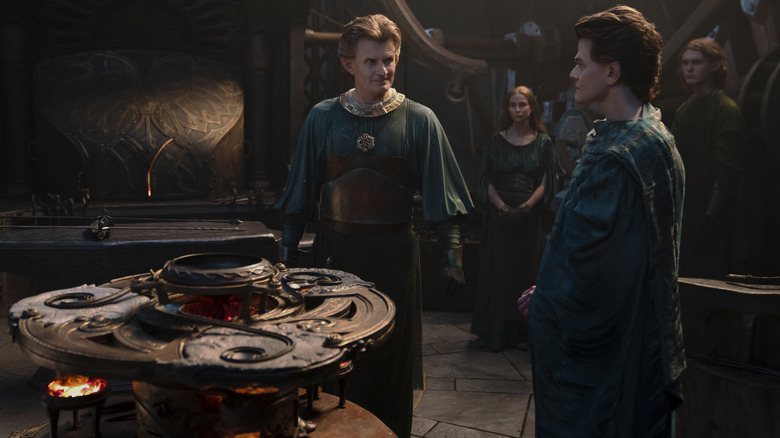
"One Ring to rule them all ..."
Fans aren't likely to forget the haunting words narrated by Cate Blanchett's elf queen Galadriel which open 2001's "The Lord of the Rings: The Fellowship of the Ring," adapted from author J.R.R. Tolkien's original text. In short order, director Peter Jackson had summed up much of the backstory that newcomers would need to hit the ground running and understand the plight of Middle-earth under the threat of the Dark Lord Sauron's return. But as much as the trilogy relied upon the fate of the One Ring, it mostly left all those other Rings of Power strictly on the sidelines.
That's where Prime Video's "The Lord of the Rings: The Rings of Power" series came in, filling in the gaps from thousands of years earlier in the canon to tell the sprawling tale of how the heroes of Middle-earth dealt with Sauron the last time he appeared. As of the season 1 finale, the series will also deal with the creation of the first of those Rings.
Although liberties were taken regarding plot specifics, like a younger Galadriel (played by Morfyyd Clark) obsessively following the trail of Sauron or the existence of Charlie Vickers' duplicitous Halbrand, the broad strokes remain in line with the accounts laid down by Tolkien in the appendices found at the end of "The Return of the King." As implied by the title, the debut season carefully documented the series of events that would eventually motivate Galadriel, her loyal friend Elrond (Robert Aramayo), and the great elven craftsman Celebrimbor (Charles Edwards) to combine their various powers into crafting three particular rings.
But what is their significance? How many more are there still to be made? How do they tie into Sauron's grand plan? Let's dive in and find out.
'Three Rings For The Elven-Kings Under The Sky ...'
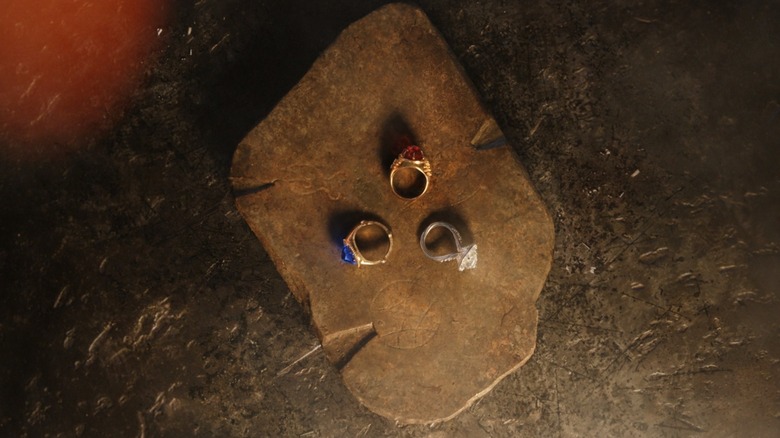
In Tolkien's various stories and notes, the forging of the three rings for the elves comes about slightly differently than depicted in "The Rings of Power" -- though plenty of parallels remain. At this point in history, Sauron has disguised himself under the "fair" and unassuming visage of Annatar, an elvish name meaning "Lord of Gifts," which explains the cheeky emphasis of that word in the season finale. Although that alias hasn't yet been spoken aloud in the Prime Video series, it's clear that this is meant to be the show's interpretation of the same events.
According to Tolkien, Sauron emerges from centuries of hiding in the wake of Morgoth's defeat during the First Age (for context, "The Rings of Power" is set during the Second Age) and befriends the great elven smiths of Eregion -- including the greatest of them all, Celebrimbor. Despite the concerns of certain elves like Galadriel and Elrond, Annatar passes on his expert knowledge of ring-making and the ability to imbue their wearers with the power to transform Middle-earth with healing, preservation, and protection. However, as with the series, it's important that Sauron isn't directly involved in the crafting of the three major elvish rings. Whereas Tolkien describes Celebrimbor as crafting the three only after Annatar departs the region, "The Rings of Power" ties Galadriel's realization of Halbrand's true identity as Sauron into his hasty departure before the rings could be finished. Upon completion, Galadriel, Elrond, and Celebrimbor should now be able to stave off the diminishing power of their people.
Their unique origin in "The Rings of Power" also extends to the order of their creation. In the books, the elvish rings are created last of all the rings of power. Here, they're crafted first.
'Seven For The Dwarf-Lords In Their Halls Of Stone ...'
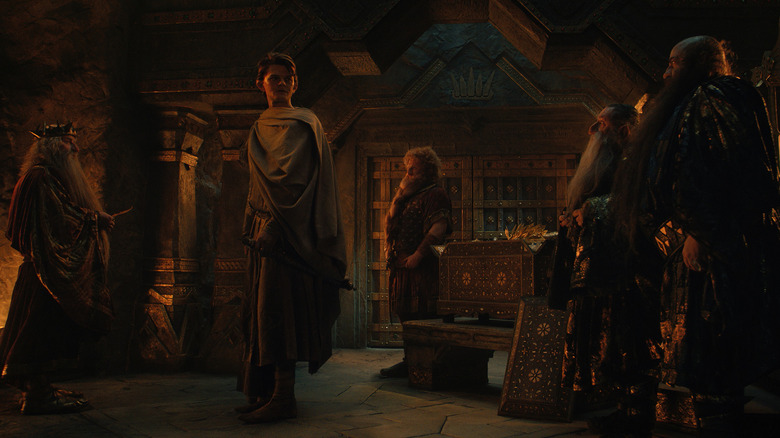
That brings us to the mighty dwarves, whom we've seen throughout "The Rings of Power" season 1 through the eyes of Elrond's old friend, Prince Durin (Owain Arthur). In the series, they've yet to receive their own batch of seven rings gifted by Annatar to seven different great lords. Unlike the elven rings, however, these are crafted under Sauron's supervision and explicitly meant to corrupt whoever wears them. But Annatar underestimates the hardiness of dwarves, who seem impervious -- on the surface, at least -- to their power. Yet that doesn't mean they wield no influence whatsoever, as they exacerbate their lust for gold and riches (this, shall we say, isn't one of Tolkien's finer moments in terms of reinforcing questionable stereotypes) and even contain the power to exponentially increase the precious ore they mine.
While Sauron's grand plan involves collecting all the rings under his power, he finds this particularly difficult with the dwarves. By the time "The Lord of the Rings" begins, most of the dwarven rings have either been consumed by dragons or simply lost in the intervening ages. Only two ultimately make it back into his clutches, one of which belonged to the father of Thorin Oakenshield (portrayed by Richard Armitage in Jackson's "The Hobbit").
It's hard to know exactly how season 2 will depict Sauron's treachery with the dwarves, especially since the secret is now out, and none ought to trust Halbrand again. Will Sauron find another disguise, leading to yet another season-long guessing game as to who he might be this time around? Or, famously stubborn as they are, will Durin's father and people simply ignore Galadriel's warnings and trust Halbrand anyway, accepting his favor and dooming themselves to centuries of trouble?
'Nine For Mortal Men Doomed To Die ...'
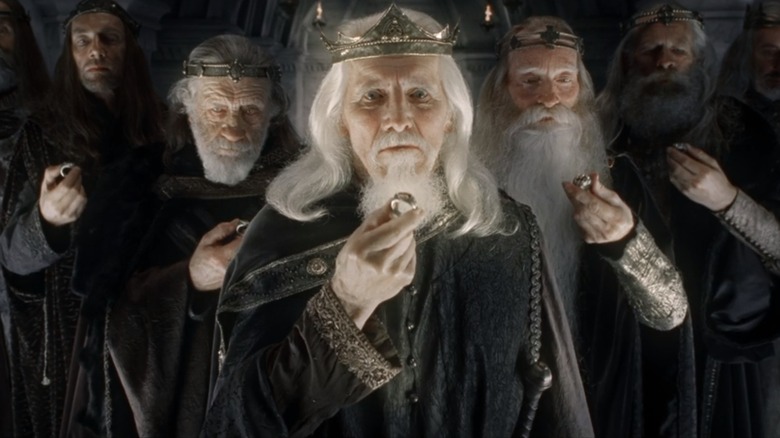
And now we come to some of the most famous rings of them all (excepting the One Ring, of course). Tolkien, Jackson's "The Lord of the Rings," and "The Rings of Power" have all taken pains to portray the race of men as the most susceptible to evil of all the peoples of Middle-earth. This is proven most emphatically through what's believed to be the Númenórean lords who were most easily seduced by Annatar. Similar to the dwarven rings, these helped their bearers achieve great wealth and power ... but like the One Ring itself, they also unnaturally extended their lifespans until they eventually withered away into invisibility and fell under Sauron's sway entirely. Known henceforth as Ringwraiths, they would eventually plague our fellowship of heroes on their quest to destroy the One Ring thousands of years later, but that's getting ahead of ourselves.
Excitingly, it's possible that we'll soon be introduced to the flawed figureheads whom Sauron will bestow his gifts upon in future seasons of "The Rings of Power." Having already established the island kingdom of Númenor, the series should have no trouble at all introducing these more sinister individuals in stark juxtaposition to other supporting characters, such as the noble Elendil (Lloyd Owen). The table-setting has already begun, evidenced by the impending fall of Númenór due to their leaders' profound fear of death. What better way to exploit this weakness than by offering some rings of power that can prolong life indefinitely?
Although all of these events take place over the course of hundreds of years in Tolkien's writings, "The Rings of Power" will have to continue to drastically condense its timeline for adaptation purposes. Either way, expect some major events in season 2.
'One For The Dark Lord On His Dark Throne ...'
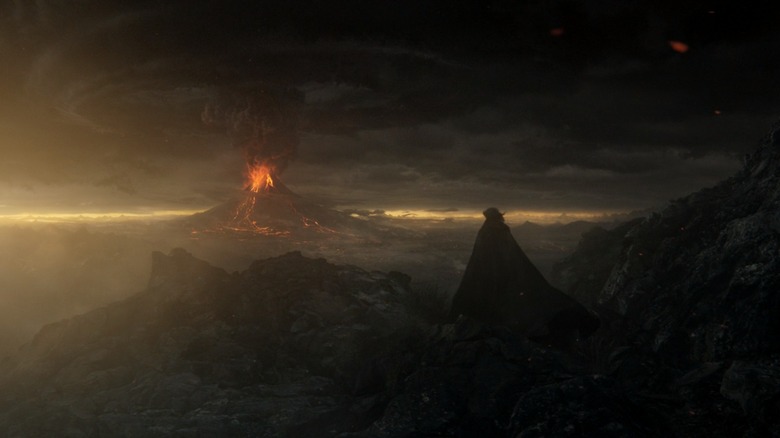
And, of course, we can't forget the One Ring to rule them all. By far the biggest development in season 1 of "The Rings of Power" has to be the Halbrand/Sauron reveal dovetailing with the transformation of the Southlands into the land of Mordor, where the shadows lie. While fans can consider the eruption of Mount Doom and its subsequent terraforming of the surrounding area as a sort of Easter egg further connecting the series to the events of "The Lord of the Rings," it actually serves an incredibly important practical purpose, as well.
As part of Sauron's devious scheme, all the 19 total rings of power (known as the "lesser rings") are meant to come under the control of his secret One Ring, created with the express purpose of turning all of Middle-earth's most powerful people into his puppets. But in order to craft the most powerful object the world has ever seen (at least since the Silmarils, that is), Sauron would need a forge to match. No dark magic in all the land could compete with Mount Doom itself, the beating black heart of the evil land, and the location where the One Ring was forged.
You might remember a little trilogy of movies called "The Lord of the Rings" that depicted why this ring was so important in the first place. But long before, Sauron's scheme paid off as the rings allowed him to wage open war on all of Middle-earth. "The Rings of Power" has some time to go before plunging into this conflict to come, but the seeds have been planted and now we await the forging of the other rings of power.
"The Rings of Power" season 2 comes to Prime Video sometime in 2024.
Read this next: 13 Fantasy Shows Like The Lord Of The Rings: The Rings Of Power You Should Check Out
The post Breaking Down All The Rings of Power from Amazon's Lord of the Rings Series appeared first on /Film.
What Most People Miss When Doing a Tick Check

As tick populations grow (thanks, climate change) and tickborne diseases like Lyme become more widespread, tick checks have become routine for a lot of us. But do you really know what it means to “check yourself for ticks”? Chances are, you’re missing some important parts of the process.
Zelda: Breath of the Wild Switch icons are back for a few weeks
![]()
The Legend of Zelda logo is a pretty good one
Nintendo has been adding various icons as bonuses for My Nintendo users, which range all across their suite of first party games (and beyond). Whenever a big game drops you can bet Nintendo will peddle some icons for it: and in case you missed the last Zelda: Breath of the Wild round, there's another one on the way.
Announced by Nintendo, a "second chance" run of Zelda: Breath of the Wild icons are available now. The first wave is scheduled to go away (back into the vault) on May 3, 2023, and the second wave will kick off on that same day through May 10. Out of all these, the Guardian one is fairly unique, and the general "Zelda" logo will slot in nicely for a lot of folks for years to come: even if Breath of the Wild fades into memory.
As a reminder, if you want physical rewards, you can find our full Platinum Point guide here, which has been updated with details on weekly missions: bookmark it for when you need quick points for a reward. A handful of points is incredibly easy to get, as that’s basically just 15 minutes with Super Mario Run, or a quick sign-on to the 3DS or Wii U 3Shop. Also remember that any shipments are bundled together, so you can pay a flat rate for multiple items instead of paying it each time. Just know that items go out of stock on My Nintendo frequently, and some are never restocked.
[caption id="attachment_375774" align="alignnone" width="640"]![]() Image via Nintendo[/caption]
Image via Nintendo[/caption]
Second chance Zelda: Breath of the Wild icons Wave 1 (April 26-May 3, 2023):
- Zelda
- Link (attacking pose)
- Link (looking pose)
- Guardian
Second chance Zelda: Breath of the Wild icons Wave 2 (May 3-May 10, 2023):
- Zelda
- Link (bow)
- Zelda logo
- Link (with horse)
The post Zelda: Breath of the Wild Switch icons are back for a few weeks appeared first on Destructoid.
Jerry Springer, Controversial Icon Of Trash TV, Has Died At 79
Jerry Springer, one of the most well-known and controversial figures in talk show history, has died at age 79.
According to TMZ, a family spokesperson confirmed that he was battling a "brief illness" and died at his Chicago home on Thursday, April 27. The outlet also claims that Springer was suffering from pancreatic cancer, which worsened in recent weeks and forced the host to stop working entirely.
Springer is best known for his work as the host of the hit talk show "The Jerry Springer Show" for a whopping 27 years, starting in 1991. The daytime program was a cultural touchstone of the 1990s and was known for its raucous, out-of-control fights and controversial subject matter. It ended up becoming something of a watering hole for folks with open schedules — namely stay-at-home moms — to watch something wild during the day among the slightly neutered soap operas. The show became a phenomenon.
But before making a splash on TV, Springer was a politician, though his legacy in entertainment certainly outweighed his civic achievements. He ran a failed campaign for United States Congress in 1970 before getting elected to Cincinnati, Ohio's City Council the following year. In 1977, he became the city's mayor, but only served one term. Interestingly enough, Springer originally focused on issues that were politically important in the early days of his show before the drama and chaos made ratings soar.
Jerry Springer's Talk Show Legacy
"The Jerry Springer Show" went off the air in 2018, but the following year, Springer started another series that allowed him to fully utilize the law school education that made him want to be a politician. "Judge Jerry" ran for three seasons in syndication, but was canceled in 2022. His last television appearance was that same year on "The Masked Singer," where he portrayed The Beetle and was eliminated in the fifth episode.
If there's one thing '90s kids remember about their childhoods when it comes to daytime television, it is certainly seeing glimpses of "The Jerry Springer Show" as your mom tried to quickly cut away but had a hard time finding the remote. The show was a major part of the zeitgeist, and for better or worse, it changed the landscape of talk show programming as we knew it. No matter how you slice it, that is one hell of a legacy.
Springer is survived by his daughter, Katie Springer, and will be missed.
Read this next: The Best TV Shows Of 2022, Ranked
The post Jerry Springer, Controversial Icon of Trash TV, Has Died at 79 appeared first on /Film.
Nintendo’s Copyright Strikes Push Away Its Biggest Fans
Growing Out Your Hair? Try Taking More of These Vitamins for Long, Lush Locks
James Gunn Doesn't Agree With The Choice To Have Star-Lord Doom The Universe In Avengers: Infinity War
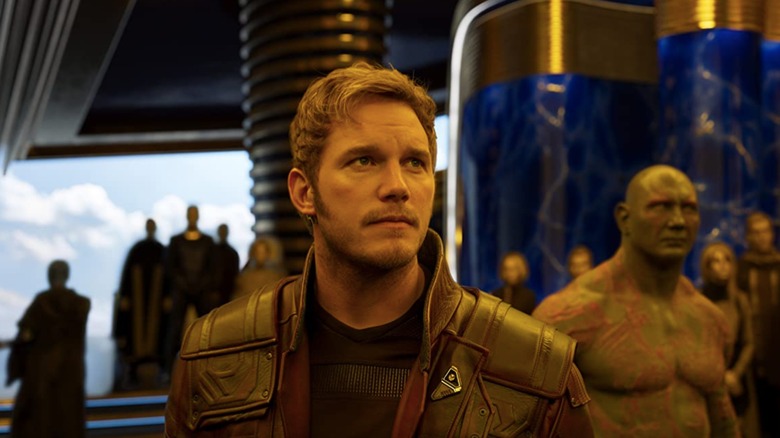
In Anthony and Joe Russo's 2018 superhero flick "Avengers: Infinity War," a genocide-focused space alien named Thanos (Josh Brolin) was hellbent on acquiring six all-powerful stones that, when assembled, could essentially grant any wish. Thanos, a military man, was deeply concerned about over-population and poor resource allocation throughout the universe. Because he was raised as a soldier and wasn't terribly imaginative, Thanos' only solution for said problems was to kill off half of the universe in a single instant. Hence his need for Infinity Stones.
Because the stones were ineffably mystical, acquiring them took some work. One of the stones would only be given to him, for instance, if he made a blood sacrifice by throwing a loved one off a cliff. He chose to murder Gamora (Zoe Saldaña), his adopted daughter. This angered and dismayed Peter (Chris Pratt) a.k.a. Star-Lord, the kind-of leader of the Guardians of the Galaxy, who had recently fallen in love with Gamora.
Star-Lord learned of Gamora's death at a crucial moment in the movie. A group of superheroes, using all their supernatural resources, had managed to temporarily hypnotize and incapacitate Thanos. If Star-Lord managed to pull Thanos' Infinity Stones off of his hand, then the day would be saved. When Thanos, even hypnotized, let slip that Gamora was dead, Star-Lord winced in pain and punched Thanos in the face instead. That only woke him up and made him mad. Thanos fled and continued to gather up his gems. If Star-Lord had focused on the task at hand, the movie would have been over and the audience could have gone to get Johnny Rockets that much sooner.
James Gunn, the director of Star-Lord's 2013 debut film, "Guardians of the Galaxy," recently revealed to The Hollywood Reporter that he hated what the character did.
Star-Lord
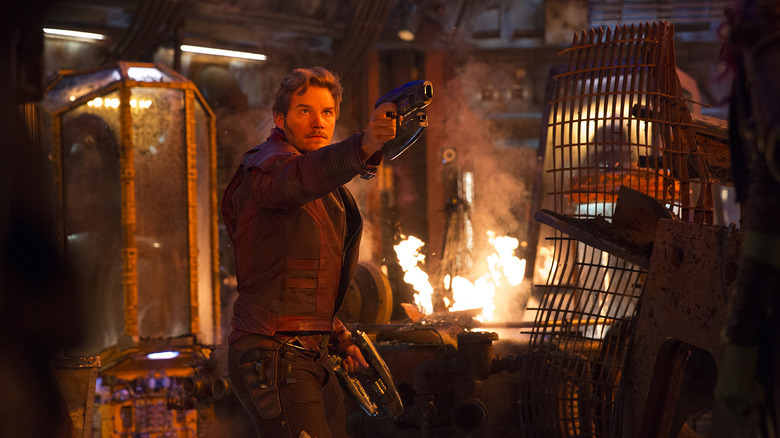
Gunn, as the originator of Star-Lord's cinematic form, had different ideas as to what the character's behavior might have been in such a scenario. Gunn had nothing to do with the making of "Avengers: Infinity War," so other directors and screenwriters got to dictate Peter's reactions to Thanos. It could be argued that Thanos was so large and scary that Star-Lord wasn't entirely in character, but Gunn disagrees. "They did some things that I wouldn't have wanted," he said in the Hollywood Reporter interview. By Gunn's estimation, Star-Lord would certainly have killed Gamora first, if she had asked and he knew it was for the good of the universe. He certainly would not have punched Thanos in the face at a crucial juncture.
Of course, if Star-Lord had behaved as Gunn would have wanted, all kinds of "What If...?"-like scenarios being to emerge. What if the heroes had the Infinity Stones earlier in the film? What if the power corrupted one of them, and they began rewriting reality willy-nilly? What if Dr. Strange (Benedict Cumberbatch) went mad and became an even worse villain than Thanos? Or what if the heroes tried to destroy the gems, only to find they were the eggs of living godlike creatures? Would it be ethical to murder them? Gunn was not asked how he would have told a similar "Infinity War" style story, however.
Should I ever get a chance to bend his ear, perhaps I will ask.
Calling Up James
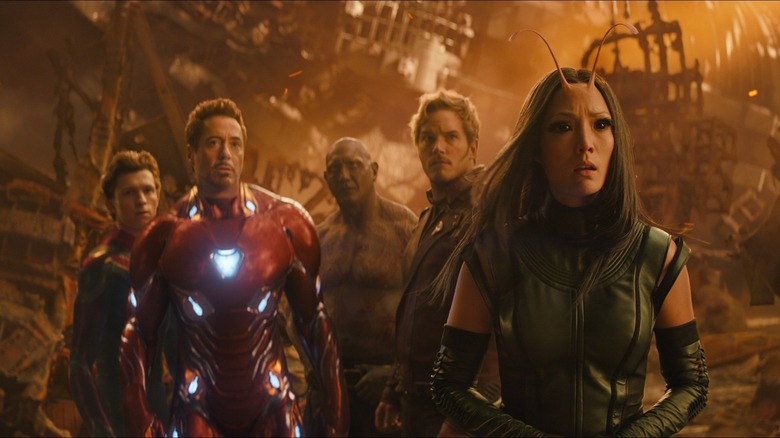
The cast of "Guardians of the Galaxy" was also interviewed by the Hollywood Reporter, and they admitted that they weren't wholly comfortable without Gunn on set giving them direction. This was the first time they had played their "Guardians" characters with another director, and they missed their first boss. Pom Klementieff, who plays the Guardian Mantis (the psychic character who hypnotized Thanos), admitted she even called Gunn from the set to make sure that Anthony and James Russo were doing it right. She said:
"I can't imagine playing Mantis with someone else writing the words. [...] I was being given directions, and I was like, 'I think I'm going to call James.'"
Gunn also said that Pratt reached out to him from the "Avengers" set. No one said that their faith in the Russo's was worthy of concern, just that they wanted a familiar voice on the phone when playing these particular characters.
James Gunn's "Guardians of the Galaxy, Vol. 3" will be in theaters on May 5, and will be the final cinematic outing for the characters for the time being. It will be the 32nd film in the MCU. It will be followed by "The Marvels" in November, "Captain America: New World Order" the following May, "Thunderbolts" the next June, and "Blade" in September of 2024. Gunn, meanwhile, is currently running production on the nascent DC Universe, and preparing to make "Superman: Legacy," the first film in a brand new cinematic continuity.
Read this next: The 11 Best Pre-MCU Superhero Movies
The post James Gunn Doesn't Agree With the Choice to Have Star-Lord Doom the Universe in Avengers: Infinity War appeared first on /Film.
AMD Issues Second Statement on Ryzen 7000 Burnout Issues: Caps SoC Voltages
Yesterday, AMD issued a statement surrounding the burnout issues some users have been experiencing with their Ryzen 7000X3D processors. The problem, reported in multiple Reddit subforums, includes some Ryzen 7000X3D CPUs burning out part of the chip, and damaging the AM5 socket in the process. This morning, AMD has released a second statement regarding the issue, including what it is doing to rectify the problem and put Ryzen 7000 processor owners at ease.
The official statement from AMD is as follows:
We expect all of our ODM partners to release new BIOS for their AM5 boards over the next few days. We recommend all users to check their motherboard manufacturers website and update their BIOS to ensure their system has the most up to date software for their processor.
Anyone whose CPU may have been impacted by this issue should contact AMD customer support. Our customer service team is aware of the situation and prioritizing these cases."
To counteract the problem, AMD has apparently identified an issue with specific chip voltages going too high when users enable AMD's EXPO memory profiles. A new cap on SoC voltages looks to be the primary change in the AGESA firmware rollout.
However, AMD's broad statement mentions that the update will address multiple power rails, which implies to some degree that the issue may be more than just the SoC power rail – or at least, that AMD isn't taking any chances. So what this entirely means is still a bit up in the air, as AMD hasn't specified in detail what it's doing outside of SoC power limits to prevent Ryzen CPUs from exceeding their specification limits.
Technically speaking, enabling EXPO memory profiles is a form of overclocking – i.e. operating the processor outside of specifications – as AMD's Ryzen 7000 family only officially supports DDR5 memory up to DDR5-5200 speeds. So going past this is putting additional stress on the memory controller in terms of clockspeeds; but the greater concern is how the various voltages on the chip are being adjusted to keep up with the demands of higher memory speeds.
One interesting point about AMD's statement is that it doesn't allude to whether or not the issue is just on its Ryzen 7000X3D processors, or whether it affects all of its Ryzen 7000 processors entirely. Regardless of the Zen 4 chip that users may have, AMD is ambiguous in its language, and it seems to be that AMD is recommended that all users with a Ryzen 7000 series processor should update to the latest firmware.
In practice, enabling EXPO memory profiles on compatible DRAM does seem to push SoC voltages beyond AMD's safe spot on the Ryzen 7000 processors, which AMD is treating as part of the cause of the burnout issue. AMD does, however, state that the changes it has made to their AGESA firmware, once flashed, shouldn't affect the user's ability to apply EXPO memory profiles on compatible kits of DDR5 memory. Which does raise the question of why motherboards were increasing SoC voltages in the first place, as presumably this shouldn't be needed if AMD's new caps won't limit EXPO memory overclocking.
In any case, AMD is actively working with its motherboard partners to release a new AGESA firmware with the new voltage limits, which they say has already been distributed. AMD claims that all AM5 motherboard vendors and models should have a new BIOS version available to them within the next few days, and is recommending all users to update their BIOS at their earliest convenience.
Image source: Speedrookie/Reddit
Chinese Cyberspies Delivered Malware via Legitimate Software Updates
Chinese APT Evasive Panda has been observed targeting local members of an international NGO with the MgBot backdoor, delivered via legitimate software updates.
The post Chinese Cyberspies Delivered Malware via Legitimate Software Updates appeared first on SecurityWeek.
FromSoft's mech-action game Armored Core 6: Fires Of Rubicon comes out in August
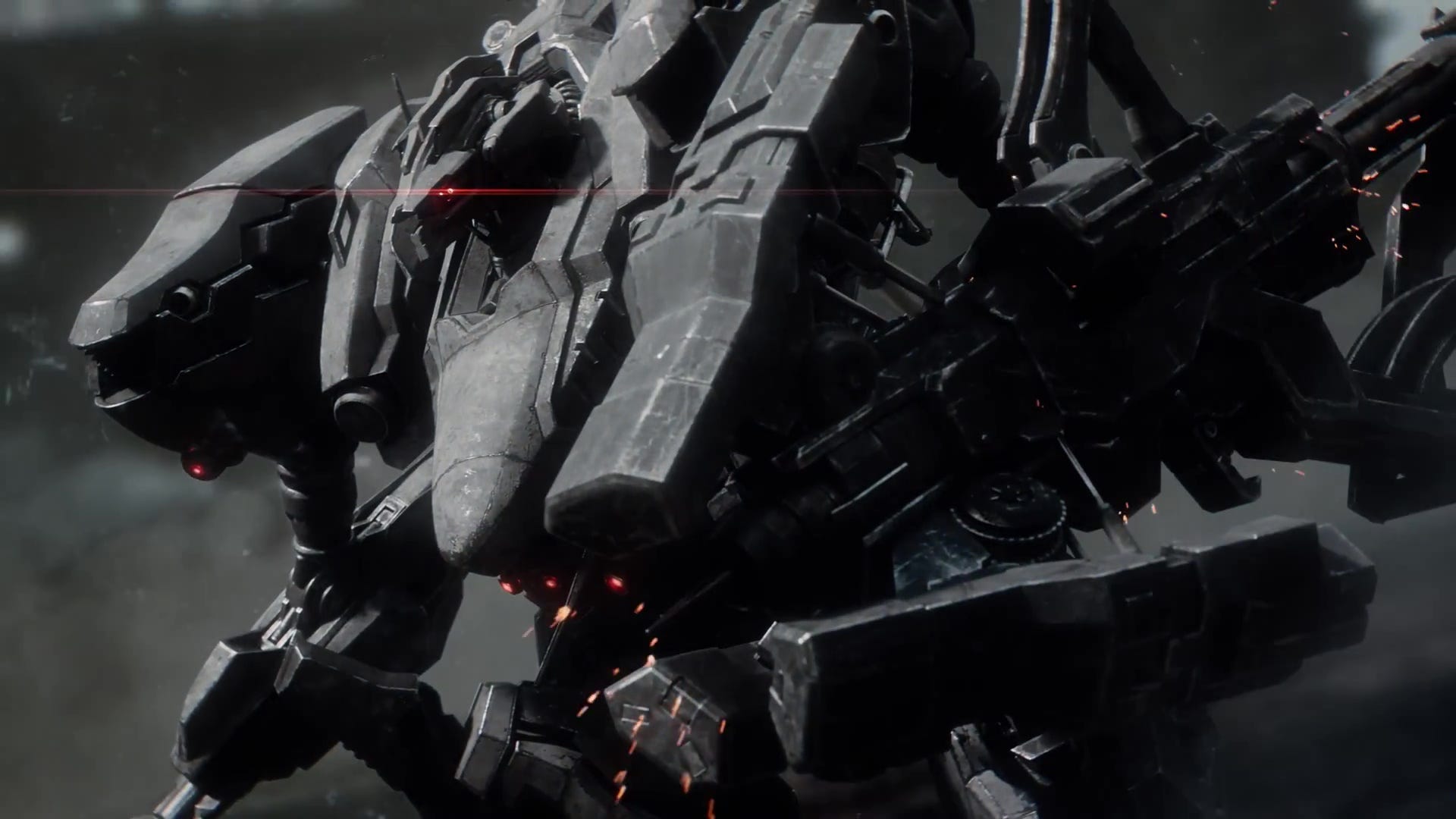
Armored Core 6: Fires Of Rubicon is dropping into action on August 25th, developer FromSoftware have announced. Last December, the studio most famous for Dark Souls and Elden Ring announced they were returning to their mecha action roots, and we now have the first gameplay trailer showing off those chunky mechs and huge explosions. Take a look below.













